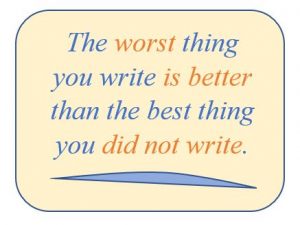20 Introductions and Conclusions
Dr. Karen Palmer and Sandi Van Lieu
Introductions

The introduction has two main jobs. First, it sets the stage for the argument that you will be making, letting readers know what is coming. Second, it connects that argument to the audience’s experiences so that they will want to read the argument. For the purposes of an introductory composition course, an introduction is usually no longer than a paragraph (four-six sentences). However, if a paper is longer than 5-6 pages, the introduction might be longer. In a 10 page paper, an introduction might be about a page. In a 200 page dissertation, the introduction will be chapter length–10-15 pages!
Parts of an Introduction
An introduction has three parts: a hook, an introduction to the topic, and a thesis.
- Hook: The hook captures the reader’s attention with an intriguing question, a surprising fact, or a story that pulls them in. Your hook should relate the information in the argument to the reader’s experience, connecting the reader to the argument. (Hint: you must know who your audience is to do this effectively!)
- Introduction to the topic: The introduction to the topic serves as a bridge between the hook and the thesis. It tells readers how the hook relates to your argument and gives them them the basic details about the topic. If you are writing about a piece of literature, for example, this is where you would include the title and author.
- Thesis: The thesis is a one sentence statement that tells readers what the purpose of your essay is and gives a “map” of the paper. Your thesis should include both an arguable opinion about your topic and the main points you will cover in your essay.
Here is a sample introduction paragraph from an argument paper about community gardens:
The Hook is the question at the beginning of the paragraph–it provides a surprising statistic about food insecurity on college campuses. The last sentence is the thesis–it presents the author’s opinion on the topic. The middle two sentences introduce the topic of the paper and connect the hook to the thesis.
Checklist:
Here’s a checklist that can help you make sure your introduction includes all the necessary components:My introduction is a minimum of 4-6 sentences:
◊ I start with an engaging sentence that relates to my main topic.
◊ I grab the reader’s attention with a surprising fact, and interesting quote, or a question.
◊ I set the tone for the rest of the essay.
◊ I move from general to specific, with the thesis as the last sentence in the intro.
◊ I have a clear thesis that sums up what the paper is about.
Conclusions
Like the introduction, the conclusion of a paper should be brief but powerful. A conclusion helps the writer to wrap up the argument successfully. One way to do this is by presenting the introduction backward. Instead of moving from broad to specific, go the other way. First, re-state the thesis, then relate it back to your topic. Finally, end with that idea that you used to connect readers to the topic. If you asked a question, give the answer in the conclusion. If you told a story, tell readers the rest of the story. Depending on the type of essay, a conclusion might also include a call to action. The goal is to leave readers feeling that the time they spent reading the essay was worth their time because they learned something new or were presented information in a way that they hadn’t considered previously.
Here is a sample conclusion from the Community Garden essay:
Note that the first sentence here restates the thesis, then the paragraph moves from the specific solution to a more general call to action that is related to the hook–the number of students facing food insecurity on college campuses–recapping the main points of the essay along the way.
Exercise 1
1. Using your current course essay topic, write an outline. Then, use the checklist as you edit your introduction:
◊ I start with an engaging sentence that relates to my main topic.
◊ I grab the reader’s attention with a surprising fact, and interesting quote, or a question.
◊ I set the tone for the rest of the essay.
◊ I move from general to specific, with the thesis as the last sentence in the intro.
◊ I have a clear thesis that sums up what the paper is about.
Attributions
- “Introductions and Conclusions” adapted from The Worry Free Writer and licensed under CC BY NC SA.
- Additional content written by Dr. Karen Palmer and Dr. Sandi Van Lieu and licensed under CC BY NC SA.
